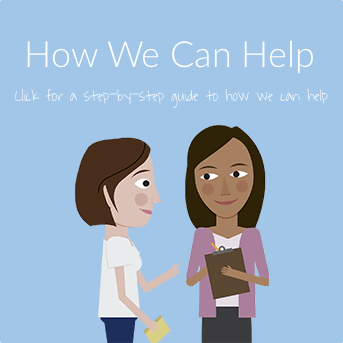Tense Muscles & Sweaty Palms: Addressing Thoughts and Sensations Anxiety
Do you ever get a knotted stomach, shaky voice, jittery hands, dizziness, or fatigue? These can be signs of anxiety if you are not dealing with a medical problem. These sensations can feel uncomfortable. They can make us feel like everyone sees our anxiety and make us want to hide. That desire to hide can leave us feeling alone. But you are not the only one. Research shows over 90% of people with anxiety feel physical sensations like these. The discomfort can lead people to try to do anything to get rid of that sensation. However, the hacks and unhelpful coping tactics we use to try to get rid of the sensations often leave us stuck because they do not target the actual cause of our anxiety: our thoughts.
How CBT Addresses Anxiety
Cognitive Behavioral Therapy (CBT) is an evidenced-based approach that focuses on changing thoughts and behaviors to get past anxiety. CBT research shows it is our thoughts that lead to our emotions along with the impulses and physical sensations. It can appear that these sensations come out of nowhere. But it is important to notice what thoughts come before those sensations. Identifying thoughts that lead to anxiety is a skill that we can practice and get better at over time. And once we are able to identify our thoughts, we can start to challenge and change them. Let’s talk about how we might do this.
At Learn to Live, we help people use Thought Inspection to identify thoughts and ask questions that might challenge the truth behind them. Imagine you have an important presentation to give at school or work. You have felt muscle tension and an upset stomach for a few days. You might notice thoughts like: “What if I stumble on my words?”; “They might think I’m incompetent”; and, “I couldn’t handle it if I mess up my presentation!”
To challenge these thoughts, you can ask yourself questions from Thought Inspection:
- Focus on just the facts. Do I know for sure that this thought is true?
- Travel into the future. Will this be such a big deal in 5 years?
- Be the jury. What hard evidence do I have that my thought is likely?
- Paint a different picture. How could things turn out well instead?
Challenging our thoughts helps us to find faults and unhelpful assumptions among them. Then, we can reframe them. But sometimes our thoughts do come true. Another piece of Thought Inspection is learning to coach ourselves through those challenges. We can consider how we might be able to solve the problem. We can identify people to talk to who can help. We can realize that our feelings will pass. We can then find that we can handle tough situations that may lead to anxious thoughts.
Feeling physical sensations of anxiety is common. Hopefully, you can use tools like Thought Inspection (found in the Stress, Anxiety & Worry program) to reframe those thoughts and reduce your overall anxiety and sensations.




